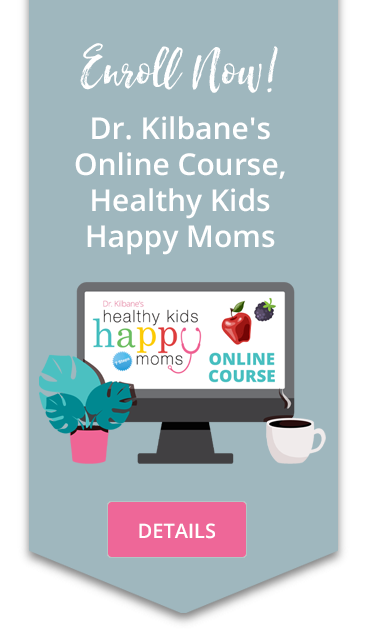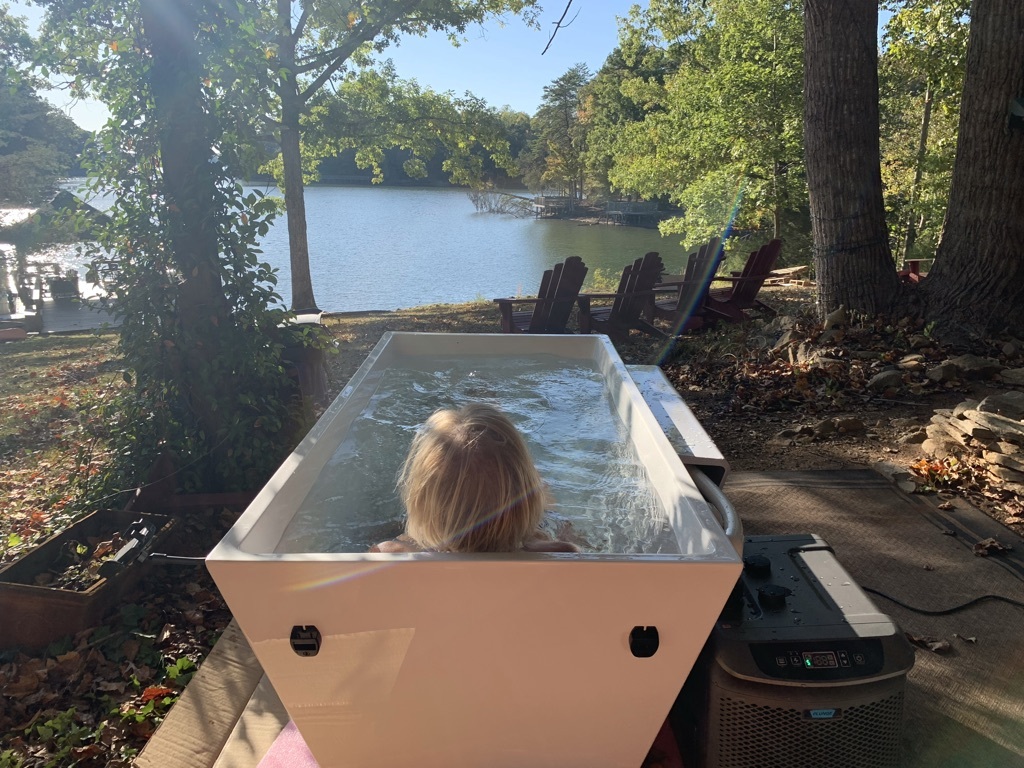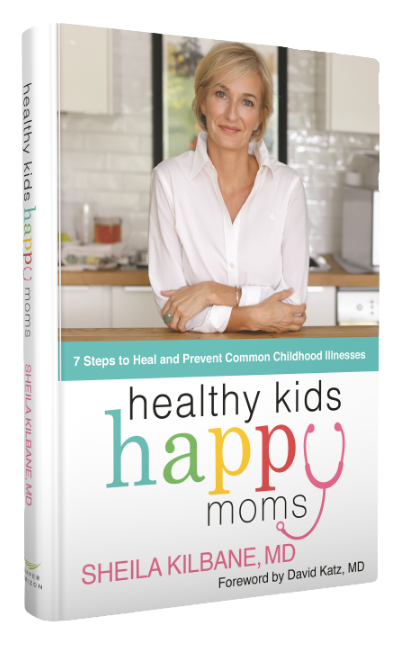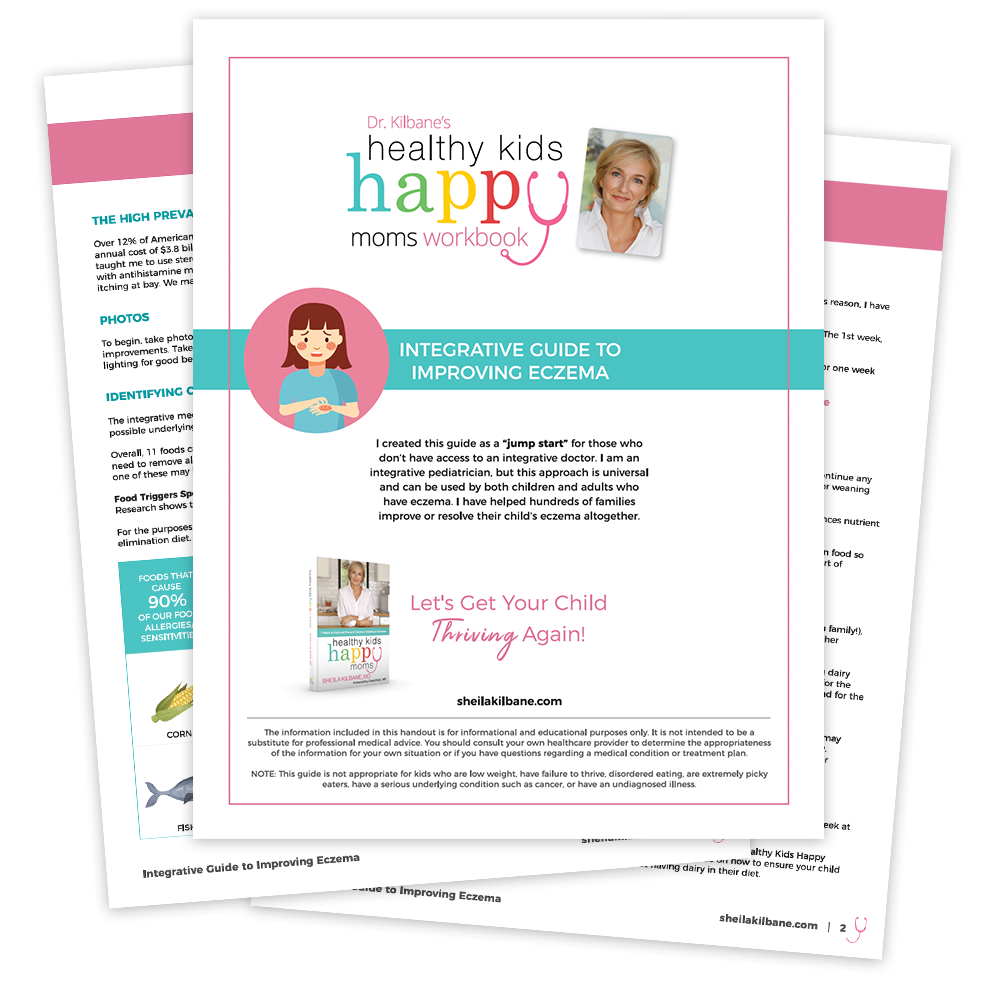Gary was four years old when his mother brought him to see me. He’d had a persistent cough for several months. Throughout the past two years, he’d had recurrent bouts of cough, runny nose, and wheezing that required an Albuterol inhaler. For the wheezing, he’d taken one course of oral steroids, which he did not tolerate. His behavior became erratic, with irritability, mood swings, and sleep troubles.
At that point, his mother knew she never wanted him to take oral steroids again. She felt the conventional medical approach was aimed at treating his symptoms, while her intuition was telling her his chronic cough and congestion had some underlying cause that wasn’t being addressed.
Gary’s mother and I combed through his history. As an infant, he was extremely fussy and colicky and later developed recurrent bouts of wheezing, coughing, and chronic nasal congestion. During his office visit, I observed that he was a mouth breather, had a runny nose; dark, puffy circles under his eyes, and his breathing was audible (which I affectionately call “Darth Vader breathing”). All of these signs indicated uncontrolled systemic inflammation. On exam, the inside of his nose (nasal mucosa) was pale in color, almost bluish, and swollen shut, which made him a mouth breather.
Why Medications Didn’t Resolve Wheezing
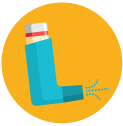
Asthma is characterized by excess inflammation in the body, the lungs in particular. When a child with asthma is exposed to one of his “asthma triggers,” like tree pollen, tobacco smoke, or even a virus, his immune system says, “HELLO INVADER, let me send an army of cells to the lungs, so I can get rid of you!”
All of the long-term “controller” medications for asthma are aimed at decreasing inflammation, not only in the lungs, but also in the rest of the body. These medications can be life-saving and have truly revolutionized our ability to care for children with asthma. Of course, they are also not without side effects.
When I was first out of residency, I used medications to treat the symptoms of the allergy march with patients like Gary. The allergy march refers to the natural history or typical progression of allergic diseases that often begin early in life, and include atopic dermatitis (eczema), food allergy, allergic rhinitis (runny nose due to allergies) and asthma. In my early years of practice I would have prescribed an inhaled steroid for him, along with an antihistamine for allergies, a topical steroid for the eczema, and a nasal steroid spray for his runny nose. This would have addressed most of his inflammatory symptoms during the time of year when his allergies and asthma flared up the most. If he had constipation on top of all that, I would have also given him a laxative.
My System to Help Children with Wheezing and Asthma
Today I have more tools for helping children like Gary. When I know a child has an increased risk of asthma or any other type of inflammatory issue like allergies, constipation, or reflux, I now look at the bigger picture and ask, How can I reduce this child’s overall systemic inflammation?
I then utilize the system I’ve developed based upon my integrative medical training and years of experience in pinpointing what may be triggering a child’s wheezing—the very system I teach in my book and online course. The system rests on three major concepts.
- Most Physical Symptoms of Illness Stem from Inflammation
- Physical Signs and Symptoms Are All Related to One Another
- Five Things Trigger Inflammation in Our Bodies
Identifying the Root Causes of Gary’s Illnesses
Gary’s systemic inflammation was triggered by four of the five main triggers of inflammation. We started with two of the five areas of inflammation: food, and environmental allergies.
Gary’s signs of inflammation can be classic for someone with a dairy sensitivity, and also classic for an environmental allergen such as dust mites. Please note the importance of removing a triggering food (dairy) and adding key supplements.
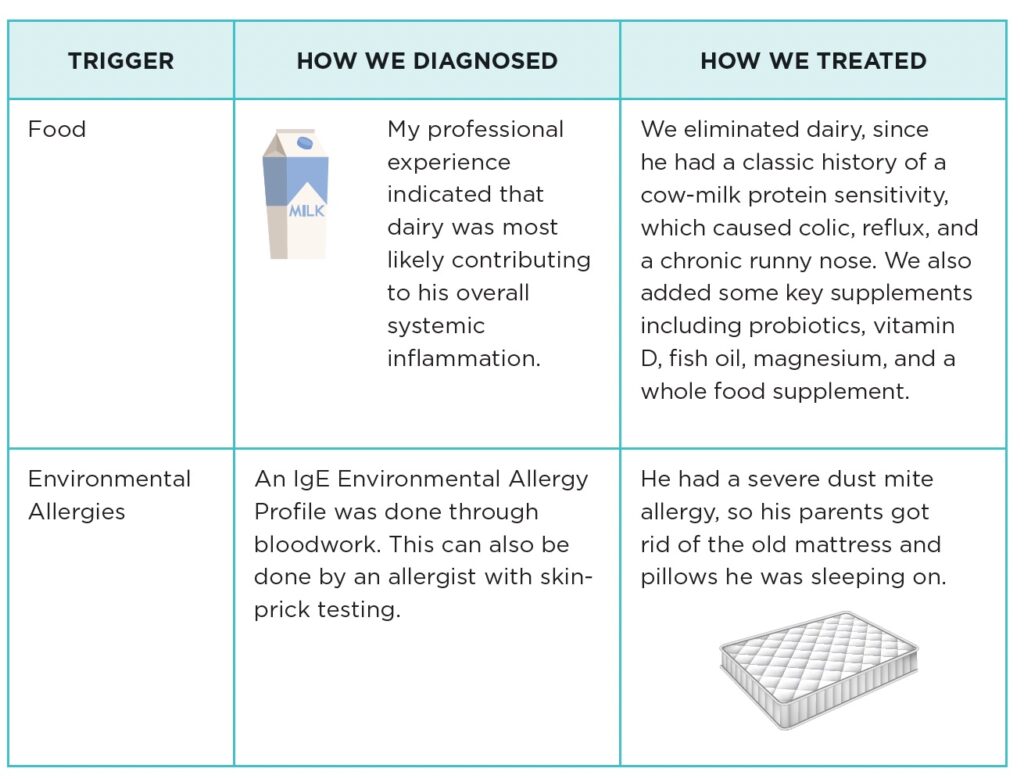
Environmental allergies often cause the nasal mucosa to be pale and swollen. As luck would have it, Gary’s previous pediatrician had done allergy testing through blood work and discovered a severe dust mite allergy. My first question when a child has a dust mite allergy is: How old are his mattress and pillows?
Dust Mite Allergy
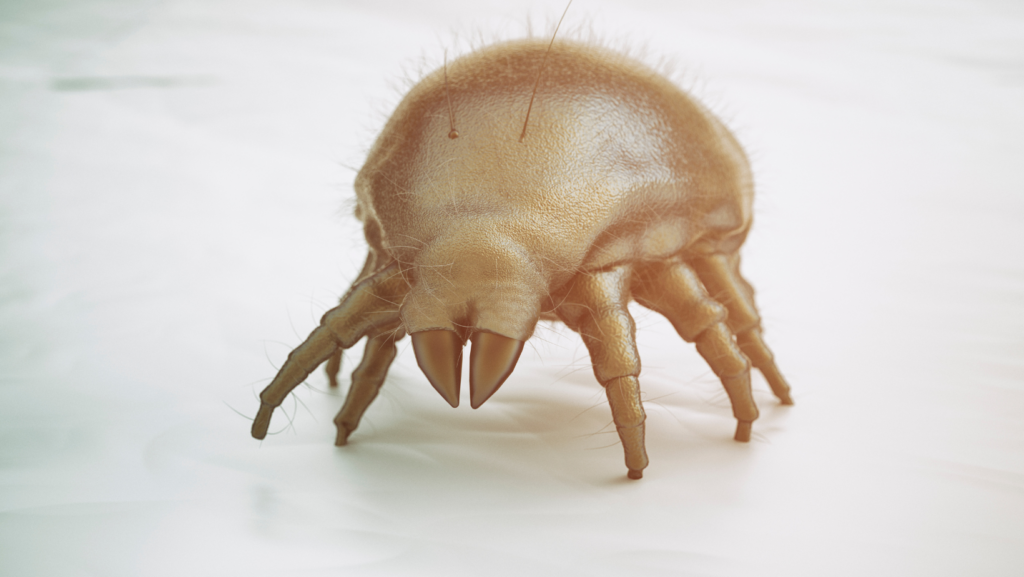
Mattresses and pillows are dust mite havens. One study, conducted at a London hospital, found that after two years, up to a third of a pillow’s weight could be made up of bugs, dead skin, and dust mites and their feces.1
Gary happened to be sleeping on a fifteen-year-old mattress from his uncle’s college days. Given the severity of his dust mite allergy, his mother and I decided they should invest in a new mattress. I also recommended new pillows. Then they could put plastic dust mite covers over the new mattress and pillows to prevent dust mites settling into them. These covers would help us keep Gary’s dust mite exposure to a minimum while he sleeps.
Risk Categories for Children who Wheeze
For kids who wheeze at a young age, we stratify them into risk categories:
- (High) Those that will likely go on to develop asthma and
- (Low) Those who will just wheeze until they are about two or three years old with colds, but then they will outgrow it
Given Gary’s symptoms, as well as his family history of asthma, he was in the highest risk category and was almost 10 times more likely to develop persistent asthma.2
Gary’s Four Triggers of Inflammation
Food and Environmental Allergies were two of the four triggers of inflammation in Gary, as I explained earlier. The third trigger was an Infectious Disease (pneumonia). In addition, his systemic inflammation was stressful for him and his family.
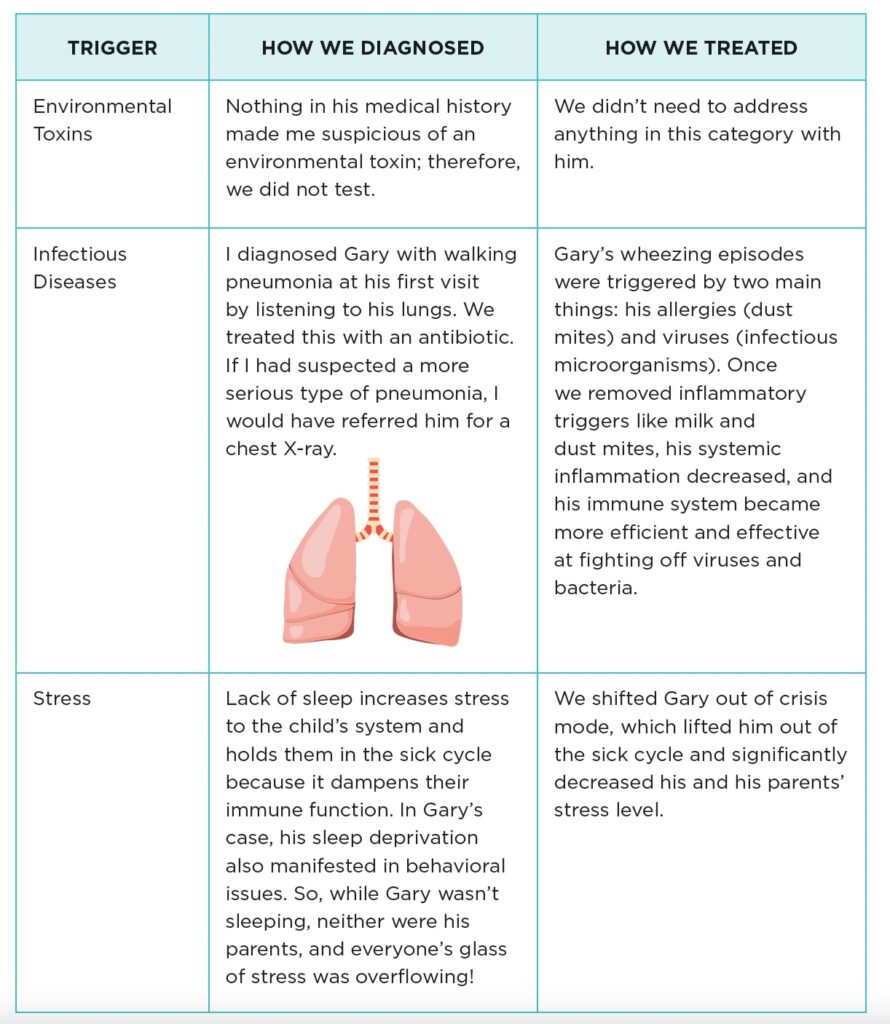
At his follow-up appointment three weeks later, Gary’s chronic nasal congestion and cough had almost completely resolved. Eventually, the dark circles under his eyes disappeared, as did his mouth breathing, and his need for Albuterol decreased.
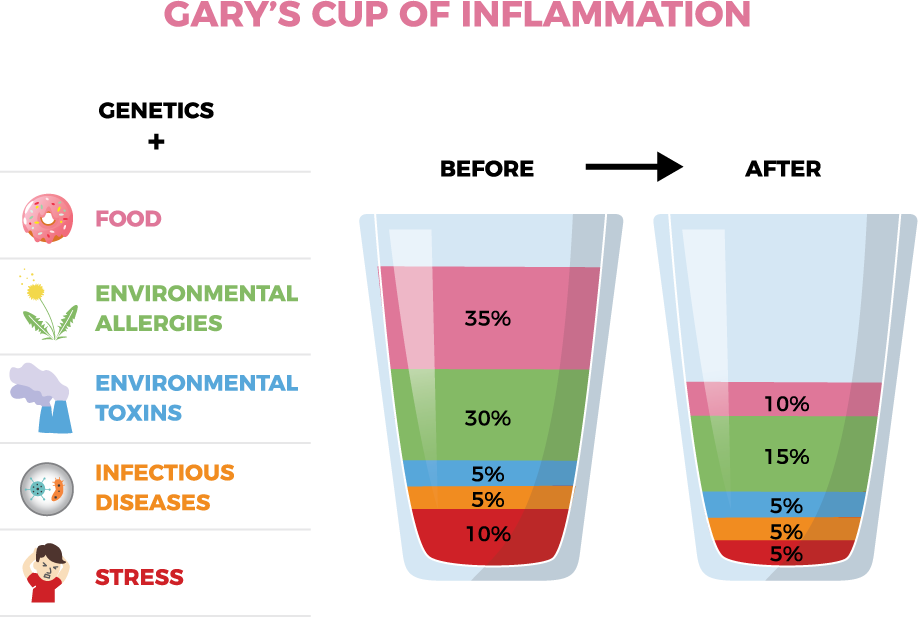
There are so many different aspects to think about when treating an individual with asthma, it can seem quite daunting for families. However, when broken down into its various parts, it becomes much easier to understand and much less elusive.
Asthma is a complex dance between allergies, the immune system, genetics, and inflammation.
More About Integrative Medicine
Integrative medicine works with traditional medicine in order to bring down overall inflammation, allowing the body to use its resources for repair.
- Patient and practitioner are partners in the healing process.
- All factors that influence health, wellness and disease are taken into consideration, including mind, spirit, and community as well as the body.
- Appropriate use of both conventional and alternative methods facilitates the body’s innate healing response.
- Effective interventions that are natural and less invasive should be used whenever possible.
- Integrative medicine neither rejects conventional medicine nor accepts alternative therapies uncritically.
- Good medicine is based on good science. It is inquiry-driven and open to new paradigms.
- Alongside the concept of treatment, the broader concepts of health promotion and the prevention of illness are paramount.
- Practitioners of integrative medicine should exemplify its principles and commit themselves to self-exploration and self-development.
References
- https://www.foxnews.com/health/study-finds-pillows-breeding-ground-for-superbugs
- Castro-Rodrigues, J.A., et al. “A Clinical Index to Define Risk of Asthma in Young Children with Recurrent Wheezing” https://www.atsjournals.org/doi/full/10.1164/ajrccm.162.4.9912111
